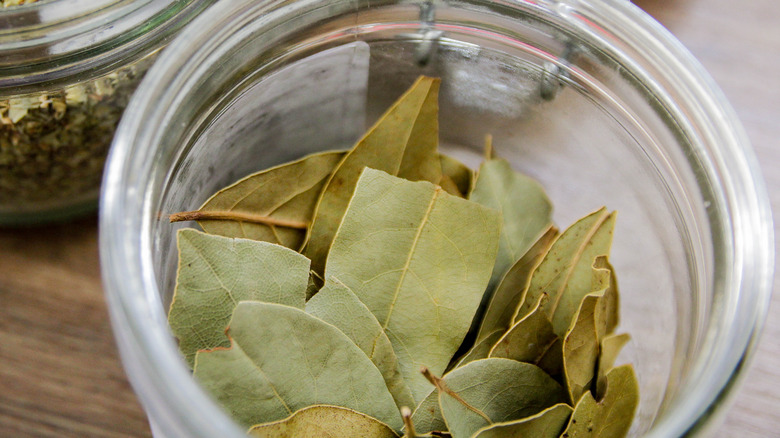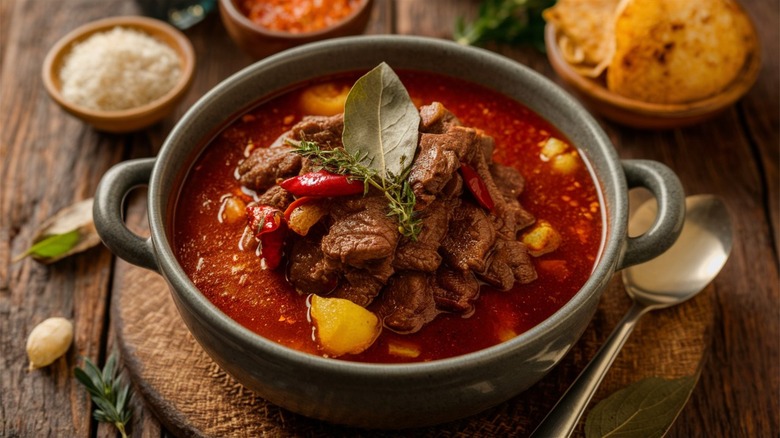How To Correctly Use Bay Leaves In Your Cooking
You might spend your whole cooking life following recipes that call for bay leaves without really understanding why. Many recipes instruct you to add a bay leaf or two and then call for them to be fished out later, yet the leaves themselves seem to lack strong scent or flavor. So, why include them at all? The truth is, leaving out bay leaves won't ruin your dish, but including them will enhance it. Bay leaves add a subtle depth of flavor and act as an aromatic, contributing that extra layer of complexity when used as directed in a recipe.
Using bay leaves correctly starts with actually using them rather than skipping them. Begin by adding the leaves to your dish early in the cooking process, as their flavor needs time to infuse into the food. Add them too late, and you could get an unpleasant taste (or none at all). Typically, you'll want to use one or two bay leaves per pot, depending on the size of your dish. Adding too many can overpower the scent of the dish or add bitterness to the flavor. Finally, make sure to remove the leaves before serving, as they are tough and can pose a choking hazard.
Bay leaf uses and substitutions
Bay leaves often show up in specific recipes, but they're also versatile enough to use when you're improvising or crafting your own dishes. Whether you're following a traditional recipe or winging it, bay leaves can add depth and a subtle herbal note. They're frequently used in a variety of cuisines, from Mexican food to Indian dishes to French cuisine. Bay leaves work well in marinara and tomato sauces and marinades, and they are a staple for your soups and stews. They even work in cocktails that need an herbaceous vibe. In starchy dishes like rice or potatoes, bay leaves offer a touch of brightness that enhances the overall flavor.
Dried bay leaves are the most commonly used, but you can also opt for fresh leaves. Just keep in mind that fresh bay leaves have a much stronger flavor, so they should be used sparingly. Also, fresh leaves won't last as long as their dried counterparts, so be sure to use them sooner rather than later. And, if you find yourself out of bay leaves, good substitutes include thyme, oregano, or even a bit of poultry seasoning, all of which can offer similar herbal notes to your dish.

